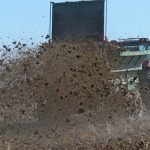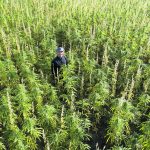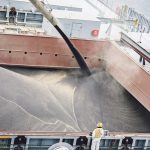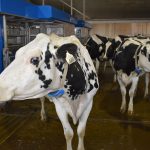Winnipeg bureau The United States has asked the Canadian government, again, for formal consultations over Canada’s policies on dairy imports. That could lead to a second dispute resolution panel, under the U.S.-Mexico-Canada Agreement. If that process leads to a favourable ruling for the U.S. and Canada doesn’t comply with its USMCA obligations, the American dairy […] Read more
 Markets
Markets

Fueling the future of Maritime movement
Ocean vessels will be ringing in the new year with new sustainability regulations. Starting Jan. 1, all ships will have to calculate energy efficiency and carbon intensity measures and submit them annually to the International Maritime Organization. Miako Ushio, manager of environmental and regulatory affairs for the Shipping Federation of Canada, said the measures are […] Read more

The payoffs and pitfalls of voluntary carbon offset
Could voluntary carbon offset markets put more money in producers’ pockets to help them become more environmentally, and financially, sustainable? In an era of increasing concern over climate change where companies are seeking to financially offset or compensate for their carbon emissions, producers potentially have an ace up their sleeves. They could use their farms […] Read more
Carbon credit vs. carbon offset: what’s the difference?
Each carbon credit is a tradeable permit that allows a polluting company to emit one tonne of C02 or the equivalent amount of a different greenhouse gas. If the company produces fewer emissions, thus using fewer credits than it purchased, it can sell excess credits to other parties who need them. A carbon credit represents […] Read more

Will feds dictate fertilizer regime by 2030?
Fertilizer Canada says with prudent management, farmers might attain a 14 percent reduction in fertilizer emissions, far short of the federal government’s 30 percent goal. Change is coming, but in what form? “Phosphorus fertilization can reduce N2O emissions derived from N-fertilization but increase CO2 emissions,” according to a February 2022 report in the journal Nature. […] Read more

Alberta builds robust renewable energy sector
The number and scale of utility grade solar and wind projects in Alberta either in service or projected to be energized in the next few years is exceeding expectations of renewable energy supporters. The projects include the 466-megawatt capacity Lone Pine wind project in Hanna, the 360-megawatt Solar Krafte development in Brooks and battery storage […] Read more

Hemp poised for breakthrough in four potential markets
As one of the founding partners of Blue Sky Hemp Ventures in Saskatoon, Andrew Potter believes innovation within the hemp realm is key to ensuring its long term sustainability — from field to fork and from seed to sale. “Hemp is the perfect tool to meet these goals. Each acre produces high quality plant-based protein […] Read more

Market shrugs off poor U.S. wheat start
The wheat market is shrugging off one of the worst starts to the U.S. winter wheat crop in decades. An estimated 34 percent of the crop was rated good-to-excellent as of Nov. 29, which was the U.S. Department of Agriculture’s last weekly Crop Progress report for 2022. It is the second worst score dating back […] Read more

China returns to canola market in a big way
China’s canola imports shot up in a big way in November. The Asian giant purchased 477,000 tonnes of the oilseed, up from an average of about 100,000 tonnes per month the previous nine months. It is China’s largest monthly import total since January 2019. That was two months before the market access restrictions on Canadian […] Read more

USDA questions canola projection
American department’s move to cast doubt on Statistics Canada’s production estimates called ‘highly unusual’
The U.S. Department of Agriculture has little faith in Statistics Canada’s November canola production estimate. Over the past 10 years, that number has grown by an average of 720,000 tonnes between the November estimate and the final estimate in August, according to an analysis published in its World Agricultural Production report. “This throws a serious […] Read more
 Markets
Markets


